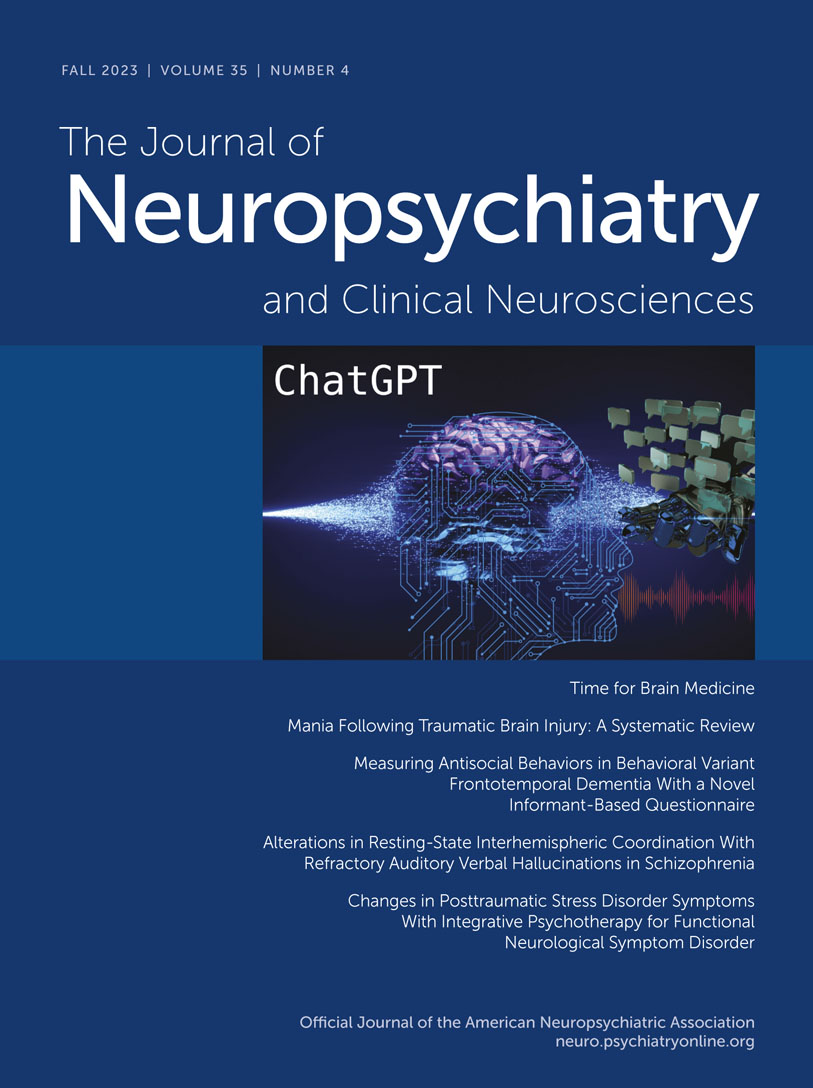Mania Following Traumatic Brain Injury: A Systematic Review
Abstract
Objective:
Traumatic brain injury (TBI) is a leading cause of mortality and morbidity worldwide. Mania is an uncommon, but debilitating, psychiatric occurrence following TBI. The literature on mania following TBI is largely limited to case reports and case series. In the present review, the investigators describe the clinical, diagnostic, and treatment characteristics of mania following TBI.
Methods:
A systematic search of MEDLINE, EMBASE, and PsycINFO was conducted for English-language studies published from 1980 to July 15, 2021. The included studies provided the required individual primary data and sufficient information on clinical presentation or treatment of manic symptoms. Studies with patients who reported a history of mania or bipolar disorder prior to TBI and studies with patients who sustained TBI before adulthood were excluded.
Results:
Forty-one studies were included, which reported information for 50 patients (the mean±SD age at mania onset was 39.1±14.3 years). Patients were more frequently male, aged <50 years, and without a personal or family history of psychiatric disorders. Although 74% of patients reported mania developing within 1 year following TBI, latencies of up to 31 years were observed. Illness trajectory varied from a single manic episode to recurrent mood episodes. Rapid cycling was reported in six patients. Mood stabilizers and antipsychotics were most frequently used to improve symptoms.
Conclusions:
Heterogeneity of lesion locations and coexisting vulnerabilities make causality difficult to establish. Valproate or a second-generation antipsychotic, such as olanzapine or quetiapine, may be considered first-line therapy in the absence of high-level evidence for a more preferred treatment. Early escalation to combined therapy (mood stabilizer and second-generation antipsychotic) is recommended to control symptoms and prevent recurrence. Larger prospective studies and randomized controlled trials are needed to refine diagnostic criteria and provide definitive treatment recommendations.
Access content
To read the fulltext, please use one of the options below to sign in or purchase access.- Personal login
- Institutional Login
- Sign in via OpenAthens
- Register for access
-
Please login/register if you wish to pair your device and check access availability.
Not a subscriber?
PsychiatryOnline subscription options offer access to the DSM-5 library, books, journals, CME, and patient resources. This all-in-one virtual library provides psychiatrists and mental health professionals with key resources for diagnosis, treatment, research, and professional development.
Need more help? PsychiatryOnline Customer Service may be reached by emailing [email protected] or by calling 800-368-5777 (in the U.S.) or 703-907-7322 (outside the U.S.).



